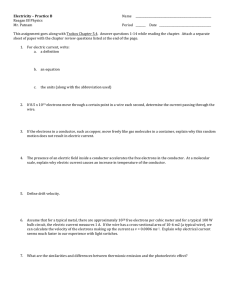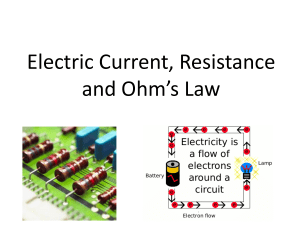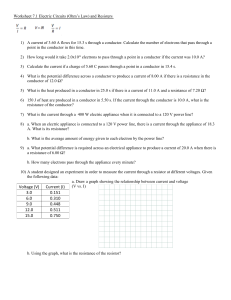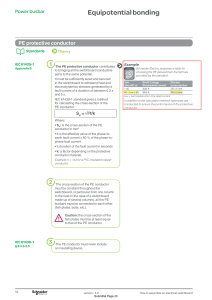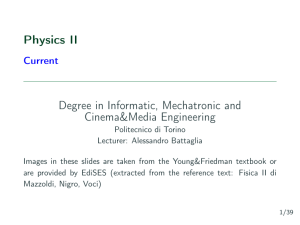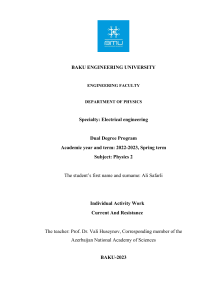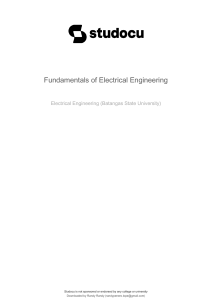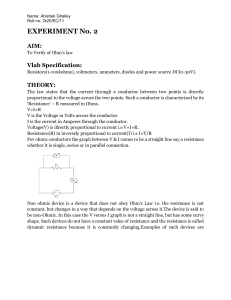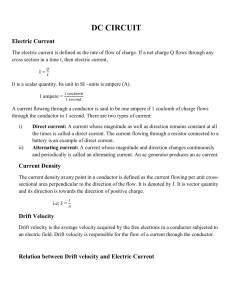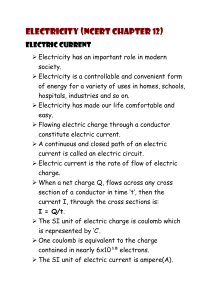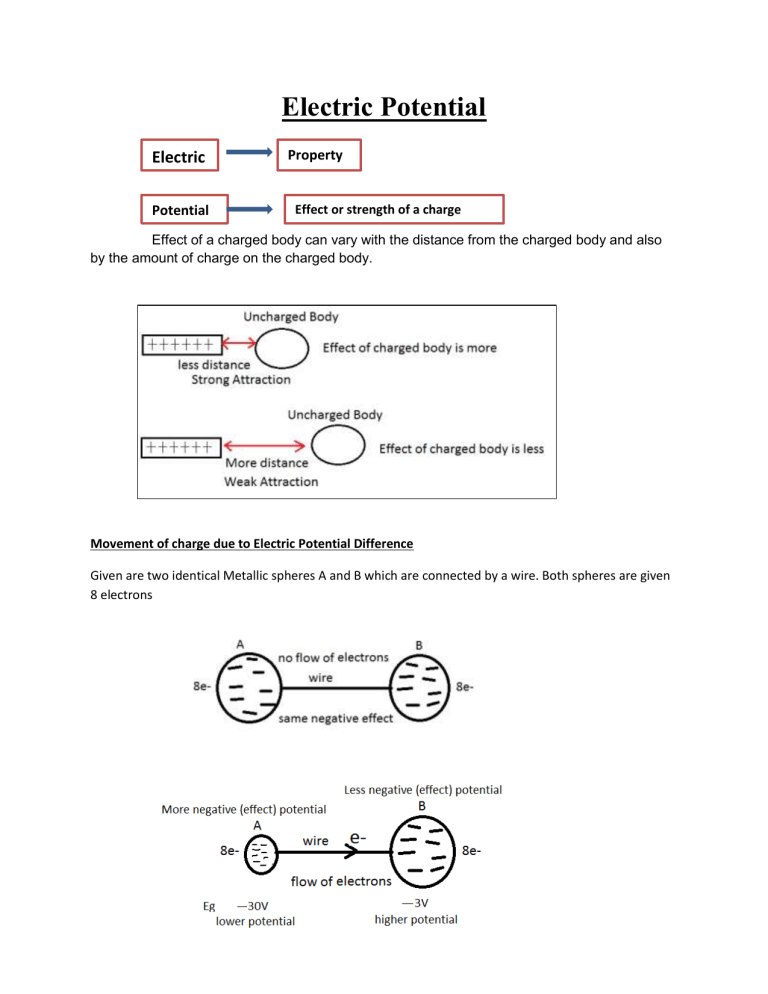
Electric Potential Electric Potential Property Effect or strength of a charge Effect of a charged body can vary with the distance from the charged body and also by the amount of charge on the charged body. Movement of charge due to Electric Potential Difference Given are two identical Metallic spheres A and B which are connected by a wire. Both spheres are given 8 electrons Conclusions: a) Electrons flow from lower to higher potential. b) Current flows from higher to lower potential. c) Charge only flows when there is electric potential difference. Relation between Electric Current and Electric Potential Difference Consider two wires AB and CD. An electric potential difference has been established across it. Across AB a small potential difference has been established and across CD, a greater potential difference has been established. As potential difference across CD is more, electron move faster in CD We know that electric current = charge flowing per unit time (q/t) through cross-section of conductor. 𝐶𝑢𝑟𝑟𝑒𝑛𝑡 ∞ 1 𝑇𝑖𝑚𝑒 ∞ 𝑝𝑜𝑡𝑒𝑛𝑡𝑖𝑎𝑙 𝑑𝑖𝑓𝑓𝑒𝑟𝑒𝑛𝑐𝑒 (Q is same in both cases) ∴ Current ∞ potential difference Provided physics conditions such as length, temperature, areas of cross-section and material of conductor should remain constant or in other words resistance of wire should remain constant. Ohm’s Law If there is no change in the physics condition of the conductor then current I flowing through the conductor is directly proportional to the potential difference V across it. ∴𝐼∞𝑉 𝑉 𝐼 = 𝐶𝑜𝑛𝑠𝑡𝑎𝑛𝑡 (𝑅) Where R is the resistance of the conductor Unit of Resistance: volt/ampere or ohm (Ω) Circuit diagram of Ohm’s Law


